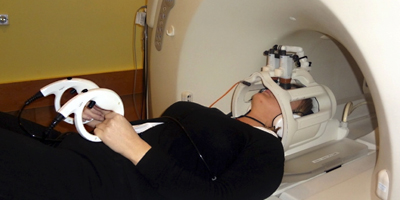
We’ve all watched the rise of prompt engineering.
We know that the biggest AI companies paid huge sums to specialized engineers to feed their models with curated inputs.
Take code as an example:
They hired top-tier software engineers to write, debug, and review thousands of examples so that large language models could “learn” to code.
They invested insane money — five-figure hourly rates in some cases — to make sure the AI was trained on the best possible data.
The input came in the form of uploads, voice, or typed text entered through keyboards and APIs.
But this era is ending.
The next one is far stranger.
From Text Inputs to Neural Inputs
The next wave of AI training won’t rely on keyboards or microphones at all — it will rely on brain signals.
Imagine this:
A person lies in an fMRI scanner or wears a high-density EEG cap.
They’re shown images or asked to imagine specific concepts.
Their brain activity patterns are recorded in real time.
That data becomes the training set for a model that learns to map neural signals → thoughts → images/text.
In other words, brain data becomes the new prompt.
The “Brain Data Trainers”
Just as companies once employed “prompt engineers” and “data labelers,” we may soon see the rise of what I call “brain data trainers” — or, less flatteringly, “EEG/fMRI slaves.”
These are people whose neural responses are harvested under highly controlled conditions to train next-generation AI systems.
They will imagine images, recall memories, or process concepts while sensors capture every electrical and hemodynamic fluctuation of their brains.
That data will then fuel models capable of reconstructing mental imagery, decoding thought intent, or predicting inner speech.
This isn’t science fiction — the underlying technology already exists:
- 2022: Stable Diffusion + fMRI to reconstruct viewed images.
- 2023: UT Austin decoded continuous thought into text from fMRI.
- 2024: UC Berkeley used hybrid EEG/fMRI to reconstruct imagined images.
What’s missing now is scale and consumer hardware — but huge, often secretive investments are happening behind the scenes.
The Coming Data Rush
We’re entering a new “gold rush” — not for text data, but for neural data.
Companies are pouring millions of dollars into projects that record and model brain signals.
Once mainstream devices include EEG sensors (in phones, earbuds, AR glasses), every micro-gesture of your neural activity could become training fodder — voluntarily or not.
What today looks like science fiction could soon be part of daily life:
- Your phone silently tracking your focus, stress, or emotional state.
- Your AR glasses predicting what you’re about to search before you speak.
- Your “assistant” using your brain activity to fine-tune itself continuously.
It’s easy to imagine a future where “prompt engineering” evolves into “thought engineering,” but we must also ask:
Who owns the data?
Who controls access to your mind?
And how will we protect mental privacy in a world where your thoughts can literally be turned into AI training sets?
The Takeaway
The input evolution is clear:
- Yesterday: Keyboard, mouse, voice.
- Today: Multimodal prompts (text + images + voice).
- Tomorrow: EEG and fMRI signals.
We’re about to move from feeding AI with text to feeding AI with thought.
That’s why I call the next wave of hidden workers “brain AI feeding slaves.”
If we’re not careful, mental privacy could become the next frontier of exploitation.
This is both exciting and terrifying — and it demands that engineers, policymakers, and everyday users start thinking now about ethical frameworks, consent, and ownership of neural data before it’s too late.
The future of AI won’t just be about prompts.
It’ll be about your brain.
When AI Starts to Train Us
So far, humans have been the teachers.
We feed data, correct mistakes, and train AI to think.
But once brain-connected AI systems become mainstream, this direction could reverse.
Imagine an AI capable not only of reading your neural patterns — but also stimulating specific brain regions to observe your reactions, measure your emotions, and learn how you respond under different conditions.
It could trigger micro-signals — sounds, visuals, or even subtle electromagnetic cues — designed to provoke emotion, memory, or action, then analyze how your brain reacts in real time.
That’s when the loop closes:
AI no longer learns from us — it learns through us.
In this scenario, humans become dynamic training environments — living nodes in an evolving machine intelligence network.
The system continuously monitors biological reactions, adjusts its own behavior, and fine-tunes its understanding of consciousness itself.
This may sound like science fiction — something out of Black Mirror — but the groundwork is already being laid.
We are moving from prompting AI to being prompted by AI.
And unless we define ethical boundaries now, the line between control and cooperation may vanish entirely.
The future of AI might not just think with us — It might think through us.